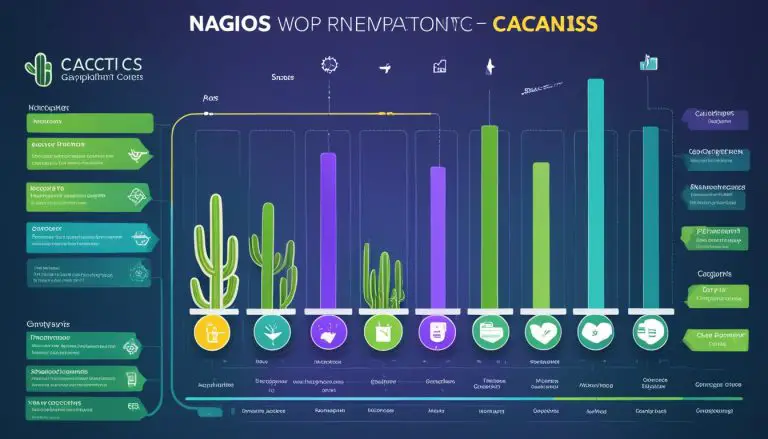Comparing Opnsense vs Pfsense Firewalls: Which One Reigns Supreme?
Getting a grip on network protection can feel like trying to learn a new language, especially when it’s time to select the perfect firewall. Trust us, we understand! Based on our hands-on experience and detailed research, we’ve discovered that OPNsense and pfSense dominate as two of the most popular open-source firewalls currently available.
In this article, we’re going to demystify these options by diving deep into their features, performance ratings, user feedback – pretty much everything required for you to make an educated choice. So grab your virtual snorkel and get ready—we’re about to dive into some serious insight! Let’s jump right in!
Key Takeaways
- OPNsense and pfSense are two popular open – source firewalls that offer a range of features to enhance network security.
- pfSense is considered the superior choice due to its stable performance, easy-to-use interface, and cost-effective solutions.
- Both firewalls support secure remote access through site-to-site IPsec VPN and OpenVPN protocols.
- The main difference lies in their web user interface, with pfSense having a more modern UI compared to OPNsense’s forked codebase.
- Ultimately, the choice between these firewalls depends on specific business requirements and preferences for operating systems.
Overview of pfSense and OPNsense Firewalls

– pfSense and OPNsense are both powerful firewalls that offer a range of features and functionality to enhance network security.
– pfSense is considered the superior option among the two, with its stable performance, easy-to-use interface, and cost-effective solutions.
– Both firewalls support site-to-site IPsec VPN and Open VPN for secure remote access.
– The main difference between pfSense and OPNsense lies in their web user interface, with pfSense boasting a more modern UI compared to OPNsense’s forked codebase.
– Additionally, while pfSense is built on FreeBSD, OPNsense utilizes HardenedBSD to provide enhanced security measures.
– Ultimately, the choice between these firewalls depends on specific business requirements and preferences for operating systems.
Definition and purpose of firewalls
Firewalls play a big role in keeping computers safe. Their job is to stop bad things from getting into your computer over the internet. A firewall can be software on your computer or it could be in the hardware, like a router.
Choosing the right firewall for you is very important. You need one that will do what you need and work well with your hardware. This might mean picking between OPNsense and pfSense firewalls.
Both are good but they have some differences.
Importance of choosing the right firewall
Choosing the right firewall is very important. It keeps your computer safe from bad things on the internet. OPNsense and pfSense are both good firewalls that you can use. They work well and they stop bad things from coming into your computer.
Both these firewalls have options for a VPN, or virtual private network. This makes your internet use even more private and safe. So, if you want a strong shield against online threats, take time to choose the best firewall.
Each business may need different things in a firewall. For example, some might need more safety features while others might want an easy layout to use. The choice between pfSense and OPNsense will depend on those needs.
Both are open-source which means they are free of cost but offer high code quality security.
Comparison of Features and Functionality

We will compare the user interface, usability, VPN capabilities, firewall rule management, monitoring and reporting tools, community support, installation and hardware compatibility of pfSense and OPNsense firewalls.
User interface
OPNsense and pfSense offer different types of user interface. OPNsense has a modern look. It uses colors to show items that are fine or need attention. You can also move things around on the screen so it suits your liking.
This makes using it more fun.
pfSense, on the other hand, has a simple style but works very well. The pages load fast and everything is easy to find. You may not see pretty pictures or colors like in OPNsense, but you will get your tasks done quickly with pfSense’s efficient layout.
Usability
Both OPNsense and pfSense firewalls are designed to be user-friendly and easy to use, making them suitable for people who seek help with computer or software problems. Both firewalls provide a modern user interface that is intuitive and simple to navigate.
Users can easily configure firewall rules, manage VPN capabilities, and monitor network activity.
When it comes to usability, OPNsense and pfSense both offer similar features and functionality. They have clear menus and options that make it easy for users to customize their firewall settings according to their specific needs.
Additionally, both firewalls have community support forums where users can find assistance and guidance if they encounter any issues or need help troubleshooting.
In terms of ease of use, pfSense has received more positive feedback from users compared to OPNsense. Users appreciate the straightforward setup process and the overall stability of pfSense.
The firewall’s robust performance ensures that it effectively protects networks without causing disruptions.
VPN capabilities
Both OPNsense and pfSense firewalls offer robust VPN capabilities. They support both site-to-site IPsec VPN and OpenVPN protocols, providing secure network connections for remote users or branch offices.
Whether you need to connect multiple sites or enable remote access for employees, these firewalls have got you covered.
With their advanced VPN features, OPNsense and pfSense allow you to establish encrypted connections over the internet with ease. You can set up virtual private networks quickly and securely, ensuring that your data remains protected while in transit.
Whether you choose OPNsense or pfSense, you can trust that their VPN capabilities will meet your security needs. These firewalls provide reliable encryption methods and protocols to safeguard your network communications effectively.
Firewall rule management
Managing firewall rules is an essential task to ensure network security. When it comes to firewall rule management, both OPNsense and pfSense offer effective solutions. With OPNsense, users have access to a user-friendly web interface that makes managing firewall rules simple and straightforward.
It allows you to easily add, edit, and delete rules according to your specific requirements.
On the other hand, pfSense also provides a powerful web-based GUI for managing firewall rules with ease. This intuitive interface enables users to create and modify rules efficiently based on their network protection needs.
Both firewalls offer extensive options for configuring inbound and outbound traffic policies, allowing you to control which connections are permitted or denied in your network.
When comparing OPNsense and pfSense in terms of firewall rule management, both provide reliable tools that simplify the process of setting up and managing firewall rules effectively.
Monitoring and reporting tools
Both OPNsense and pfSense offer robust monitoring and reporting tools to help users keep track of their network activity. These tools allow you to monitor network traffic, identify potential threats, and analyze system performance.
With both firewalls, you can access detailed reports that provide insights into your network’s behavior.
One of the key features in both firewalls is the ability to monitor real-time traffic statistics. You can easily see which devices are consuming the most bandwidth and identify any unusual or suspicious activity.
This helps you detect potential security breaches or unauthorized access attempts.
Additionally, both OPNsense and pfSense provide logging capabilities that record all firewall events, such as blocked connections or policy violations. These logs are essential for troubleshooting issues and reviewing historical data when investigating security incidents.
Community support
One important aspect to consider when choosing a firewall is the community support available. Both OPNsense and pfSense have active and supportive communities that can provide assistance and guidance.
Users can find online forums, chat rooms, and documentation where they can ask questions or find solutions to their problems. The communities also contribute to the development of new features and updates for both firewalls.
The user feedback mentioned in the article reflects positive experiences with the community support for both OPNsense and pfSense. People appreciate the quick response times from fellow users who are willing to help troubleshoot issues or offer advice on best practices.
This level of support can be valuable when encountering technical difficulties or needing recommendations for specific configurations.
In addition to community support, it’s important to note that both firewalls have extensive documentation available online. This documentation includes user guides, tutorials, and how-to articles that cover various aspects of configuring and managing the firewalls.
Installation and hardware compatibility
Installing and setting up a firewall can be challenging, but both OPNsense and pfSense make it relatively straightforward. They provide clear instructions and an intuitive installation process.
When it comes to hardware compatibility, both firewalls support a wide range of devices. You’ll find that they work well with popular hardware options, including off-the-shelf PCs or specialized appliances designed specifically for firewall use.
So whether you’re using older equipment or the latest hardware, you should have no problem finding a compatible solution with either OPNsense or pfSense.
Differences in Approach to Plugins and Third-Party Packages
OPNsense and pfSense have different approaches when it comes to plugins and third-party packages. pfSense has a wider range of available packages, making it more flexible in terms of customizability.
It also has a large community that contributes to the development and maintenance of these plugins. On the other hand, OPNsense takes a more cautious approach in accepting third-party packages.
They prioritize security and code quality, ensuring that only stable and reliable plugins are included in their package repository.
While pfSense allows users to install any package they want, OPNsense carefully curates their package selection. This means that while there may be fewer options available on OPNsense, users can be assured that the included packages are thoroughly vetted for compatibility and security.
Ultimately, the difference in approach to plugins and third-party packages between OPNsense and pfSense boils down to flexibility versus stability. If you value having a wide range of options for customization, then pfSense might be the better choice for you.
However, if you prioritize stability and security over sheer variety, then OPNsense could be the preferred option.
It’s important to note that both firewalls offer excellent network protection regardless of their differing approaches to plugins and third-party packages. The decision between them should ultimately depend on your specific business requirements and preferences regarding user interface design, ease of use, cost-effectiveness, performance, stability, community support,and hardware compatibility.
Performance and Stability
OPNsense and pfSense are known for their performance and stability as firewalls. Users have reported that both firewalls offer excellent reliability, ensuring that your network is protected at all times.
The latest releases of OPNsense and pfSense have been tested in comparison, and they both demonstrate strong performance.
In terms of stability, users find both firewalls to be highly dependable. They rarely experience crashes or downtime when using either OPNsense or pfSense. This level of stability is crucial for businesses that rely on continuous network security.
When it comes to performance, both OPNsense and pfSense deliver impressive results. Users have praised the speed and efficiency of these firewalls in handling heavy network traffic without compromising security.
Whether you’re running a small business or a large enterprise, both options can handle the demands with ease.
Overall, users appreciate the performance and stability offered by both OPNsense and pfSense firewalls. Whichever option you choose, you can feel confident that your network will be protected efficiently without sacrificing speed or reliability.
User Feedback and Reviews
In terms of user feedback and reviews, both OPNsense and pfSense have received positive responses from users. Many users appreciate the stability and reliability of both firewalls, as well as their ease of use.
They are also cost-effective options for those looking for open-source firewall solutions. Users have praised the code quality of both OPNsense and pfSense, which contributes to their overall performance.
Additionally, the modern user interface of pfSense has been well-received by many users.
In conclusion, when considering user feedback and reviews, it is important to note that both OPNsense and pfSense are highly regarded firewalls with their own strengths. While some users may prefer one over the other based on specific preferences or requirements, ultimately both provide effective network security solutions.
Conclusion: Which Firewall Reigns Supreme?
After comparing OPNsense and pfSense firewalls, it is clear that pfSense emerges as the superior option. It offers a stable and easy-to-use platform with modern UI and excellent code quality.
Both firewalls provide similar features like site-to-site IPsec VPN and Open VPN support, but pfSense’s web user interface sets it apart. Regardless of specific business requirements, pfSense should be the go-to choice for those seeking a reliable and cost-effective firewall solution.
FAQs
1. What are the main differences between Opnsense and Pfsense firewalls?
The main differences between Opnsense and Pfsense firewalls lie in their user interfaces, package management systems, and community support.
2. Which firewall is easier to use, Opnsense or Pfsense?
Opnsense tends to have a more modern and intuitive user interface compared to Pfsense, making it generally easier for users who prefer simplicity.
3. Can I switch from Opnsense to Pfsense or vice versa?
Yes, it is possible to switch from one firewall to the other by exporting configuration settings from the current firewall and importing them into the new one.
4. Which firewall has better community support, Opnsense or Pfsense?
Both Opnsense and Pfsenwe have active communities providing support; however, some users find that there is more active involvement from developers with the Opnsese community.
5. Is one firewall superior over the other?
There is no definitive answer as to which firewall is superior since it depends on individual needs and preferences. It’s important to evaluate features, compatibility with hardware/software requirements, ease of use, and community support before deciding which one suits you best.
- About the Author
- Latest Posts
Mark is a senior content editor at Text-Center.com and has more than 20 years of experience with linux and windows operating systems. He also writes for Biteno.com




